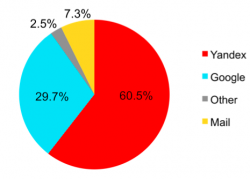AbigBiz > Trade Study > ArticleTrade Study
Malaysia's Solar Industry Is Rising
![]() ABigBizApr13, 2020【Trade Study】
℃
Leave a Reply
ABigBizApr13, 2020【Trade Study】
℃
Leave a Reply
KULIM, Malaysia-Tucked away in this former tin-mining town, past the small farms of banana trees and oil palms, is one of the solar industry's best-kept secrets.
The six factories here with cavernous rooms up to one-third of a mile long constitute the production backbone of First Solar. Working alongside minivan-size robots adapted from car assembly plants and other industries, 3,700 employees produce five-sixths of the American company's solar panels.Workers in Ohio make the rest.
The list of manufacturers is long. Panasonic of Japan has a solar panel factory a mile down the road. Sun Edison makes wafers 60 miles away in Chemor. Hanwha Q Cells and SunPower have giant factories even farther south, while Solexel, a Silicon Valley start-up, is preparing to build an $810 million solar panel factory in stages.
Malaysia, a Southeast Asian nation with just 30 million people, is the biggest winner in the trade wars that have embroiled the solar sector. As Chinese companies have been hit with American tariffs and European quotas, Malaysia has increasingly attracted multinationals with its relatively low labor costs, lucrative tax breaks, warm relations with the West and abundance of English-speaking engineering talent.
The solar manufacturing boom in Malaysia has been almost invisible which is a rarity in an industry known for heavily promoting even the smallest factory opening or new solar panel farm as progress toward cleaner energy.
Manufacturers don't want to draw attention to moving production offshore. The factories here are almost entirely owned by American, European, South Korean and Japanese companies that much prefer to talk about operations in their home countries.
Multinationals are also hustling to introduce their latest inventions just as quickly here as in their home markets, to maintain standardized production techniques and quality.
Malaysia's surge in the solar industry has irritated some of the original backers of American trade action against China. Critics say the goal was to create jobs in the United States, not Southeast Asia.
"In solar, a key technology to achieve our energy efficiency goals, the administration needs to implement a more aggressive and comprehensive trade strategy," said Michael R.Wessel, a member of the U.S.-China Economic and Security Review Commission which is an advisory group created by Congress. "If not, we'll simply trade our historical dependence on foreign oil for a dependence on foreign energy technologies and products."
Malaysia is a beneficiary of the complex interaction of global trade rules, economic competitiveness and environmental policies in the solar industry. Tariffs have had the most immediate effect.
At present, the Commerce Department is widely expected to broaden its steep duties on solar panels from China. Pending litigation would impose duties on panels made partly in China and partly in Taiwan, closing a loophole that allowed some Chinese companies to bypass the original duties.
The plunge in prices through 2013, which leveled off as Chinese giants like Sun tech Power and LDK Solar began going bankrupt from under pricing their panels, put a heavy emphasis on cost competitiveness. China's rapidly rising wages, together with mounting geopolitical tensions, prompted multinationals to look elsewhere as well.
That gave an edge to Malaysia, with its fairly low pay for skilled engineers and machinery operators.
One of Malaysia's biggest attractions is the 10-year exemption from corporate taxes for large domestic and foreign investors. While some American states offer breaks, comparable holidays from federal taxes are not available.
The tax break cinched the deal for First Solar to set up most of its production here, said Maja Wessels, an executive vice president at the company.
"That's easy, the 10-year tax holiday," she said. "When you look at solar manufacturing, an dour manufacturing in particular, low labor costs contribute, but those taxes are critical."
The six factories here with cavernous rooms up to one-third of a mile long constitute the production backbone of First Solar. Working alongside minivan-size robots adapted from car assembly plants and other industries, 3,700 employees produce five-sixths of the American company's solar panels.Workers in Ohio make the rest.
The list of manufacturers is long. Panasonic of Japan has a solar panel factory a mile down the road. Sun Edison makes wafers 60 miles away in Chemor. Hanwha Q Cells and SunPower have giant factories even farther south, while Solexel, a Silicon Valley start-up, is preparing to build an $810 million solar panel factory in stages.
Malaysia, a Southeast Asian nation with just 30 million people, is the biggest winner in the trade wars that have embroiled the solar sector. As Chinese companies have been hit with American tariffs and European quotas, Malaysia has increasingly attracted multinationals with its relatively low labor costs, lucrative tax breaks, warm relations with the West and abundance of English-speaking engineering talent.
The solar manufacturing boom in Malaysia has been almost invisible which is a rarity in an industry known for heavily promoting even the smallest factory opening or new solar panel farm as progress toward cleaner energy.
Manufacturers don't want to draw attention to moving production offshore. The factories here are almost entirely owned by American, European, South Korean and Japanese companies that much prefer to talk about operations in their home countries.
Multinationals are also hustling to introduce their latest inventions just as quickly here as in their home markets, to maintain standardized production techniques and quality.
Malaysia's surge in the solar industry has irritated some of the original backers of American trade action against China. Critics say the goal was to create jobs in the United States, not Southeast Asia.
"In solar, a key technology to achieve our energy efficiency goals, the administration needs to implement a more aggressive and comprehensive trade strategy," said Michael R.Wessel, a member of the U.S.-China Economic and Security Review Commission which is an advisory group created by Congress. "If not, we'll simply trade our historical dependence on foreign oil for a dependence on foreign energy technologies and products."
Malaysia is a beneficiary of the complex interaction of global trade rules, economic competitiveness and environmental policies in the solar industry. Tariffs have had the most immediate effect.
At present, the Commerce Department is widely expected to broaden its steep duties on solar panels from China. Pending litigation would impose duties on panels made partly in China and partly in Taiwan, closing a loophole that allowed some Chinese companies to bypass the original duties.
The plunge in prices through 2013, which leveled off as Chinese giants like Sun tech Power and LDK Solar began going bankrupt from under pricing their panels, put a heavy emphasis on cost competitiveness. China's rapidly rising wages, together with mounting geopolitical tensions, prompted multinationals to look elsewhere as well.
That gave an edge to Malaysia, with its fairly low pay for skilled engineers and machinery operators.
One of Malaysia's biggest attractions is the 10-year exemption from corporate taxes for large domestic and foreign investors. While some American states offer breaks, comparable holidays from federal taxes are not available.
The tax break cinched the deal for First Solar to set up most of its production here, said Maja Wessels, an executive vice president at the company.
"That's easy, the 10-year tax holiday," she said. "When you look at solar manufacturing, an dour manufacturing in particular, low labor costs contribute, but those taxes are critical."
- END -
Finished browsing? You can ask me to comment and Leave a Reply!
Leave a Reply!
Other articles
- Foreigners Understand Jay Chou's Song?
- The Excruciating Oversea Locations
- How to select B2B industry site Management System
- 6 reasons why every time B2B and B2C
- The bright future of trading
- Analysis of Australian Market
- Key points of being a successful salesman
- How to Know Your Product?
- Ebola Virus Reduces Import of Bauxite
- An award winning B2B vision 2015
Related news
Notes of doing business with Indian
Notes of doing business with Indian According to customs statistics, our main pro...The bright future of trading
In 15th July, the Commerce Department held a pre-match press conference to announ...The strategy for the B2B website keywords SEO
About keyword strategy of the complexity and than a few areas and b2b e-commerce ...How to Improve your Export Ability
Export Ability Product is the keypoint of foreign trade . From the ancient to now...
Leave a Reply
- 全部评论(0)

说点什么吧
还没有评论,快来抢沙发吧!
Popular this month
 The best communication time
The best communication timeRecommended

As for the foreign trader, we usually need to negotiate and communicate with the ...

Russian market has been a big chance for foreign trade salesmen because in recent...

Hello everyone! Today I would like to introduce some useful and daily apps in Ind...

As we all know, the hot products play an important part in the development of a s...
Tags
You love
- 10 Sentences That Will Make You Smile
- How to Maintain Your Old Customers?
- Tips for Final Fighting in 2016
- How to Write Claim Letters
- I Was Just the Tool
- What Are You Going to Ask
- Analysis Helps You Win Order!
- What's Wrong With Your Quotation?
- African nations may be the new Brics
- Unfathomable Foreign Trade





 微信扫码打赏
微信扫码打赏 支付宝收款码
支付宝收款码